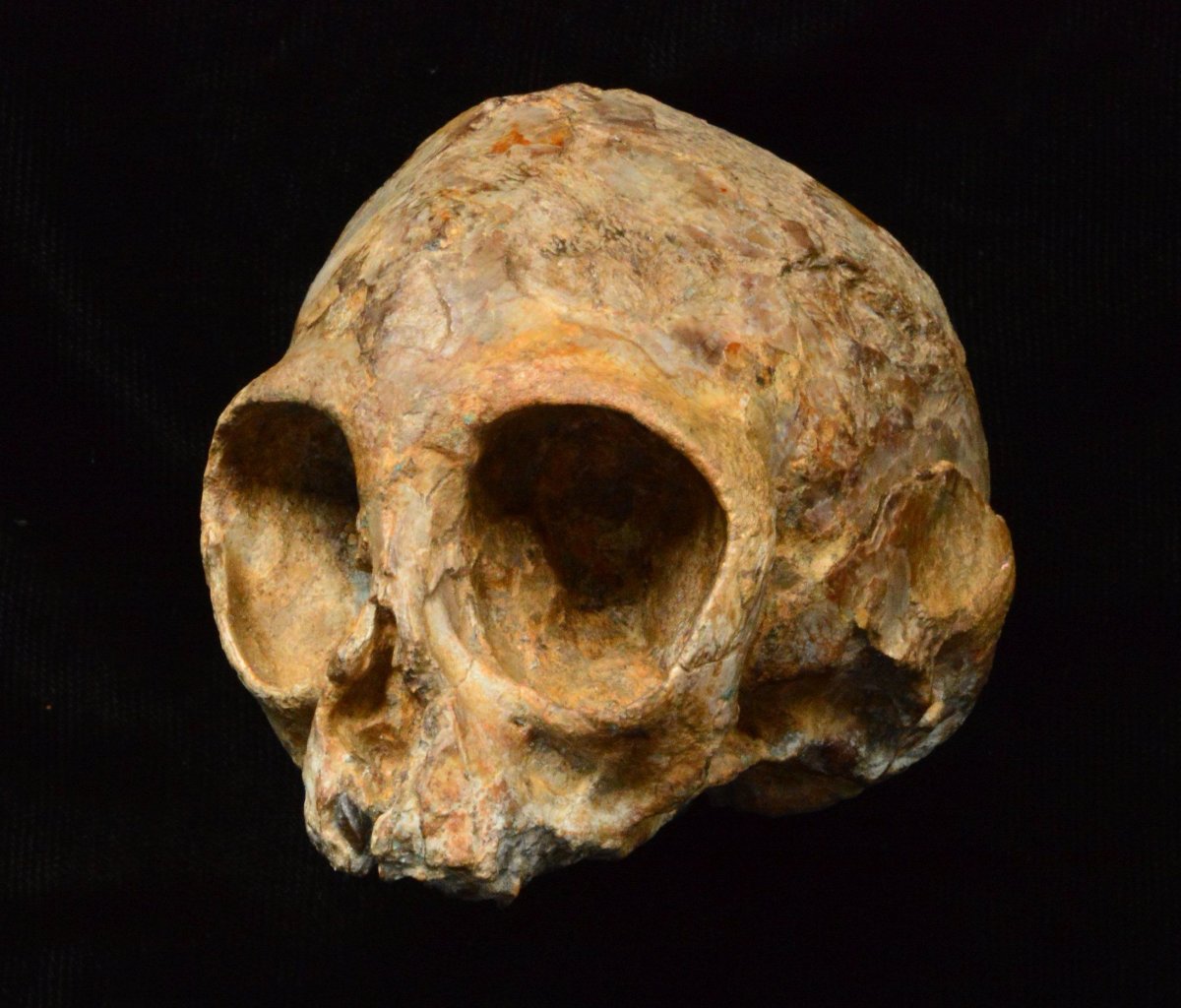Anthropologists in Kenya have discovered a 13 million year-old baby ape skull that reveals what the common ancestor of all living humans and apes would have looked like.
The lemon-sized skull was discovered in 2014 at Napudet, a dig site west of Lake Turkana in northern Kenya, according to the study published in Nature on Thursday. It is thought to be the most complete fossil ape skull ever discovered and dates from the Middle Miocene period, a crucial point in the evolutionary history of apes and humans.

Researchers determined that the skull belonged to a newly-identified species of early ape, which they classified as Nyanzapithecus alesi; the name of the species, alesi , derives from the Turkana word for ancestor.
Read more: Why Homo naledi has raised huge questions about human evolution
Its face bears similarities to modern infant gibbons, including a small snout, but the fossil's ear canals are closer to chimpanzees and humans. Alesi, as the fossil was nicknamed, also has a relatively large brain cavity of around seven tablespoons, which is more than double that of its contemporary monkeys. The skull also contains unerupted adult teeth, teeth that have formed but not emerged into the mouth. The researchers used X-ray imaging to reconstruct the teeth, which indicated that the ape belonged to a new species.

All living humans and apes are thought to derive from a common ancestor; the link between humans and chimpanzees lived in Africa between 6 and 7 million years ago. But the fossil record is scarce prior to 10 million years ago, making it difficult for experts to determine the link between apes and humans.
During the Miocene epoch—which stretches from 23.03 to 5.333 million years ago—apes underwent a period of massive evolutionary change, with more than 40 species appearing. But the epoch has a relatively poor fossil record; prior to the discovery, there were no cranial fossils found in Africa at all dating between 14 and 10 million years ago. Alesi dates from this critical Middle Miocene period.
"Nyanzapithecus alesi was part of a group of primates that existed in Africa for over 10 million years," said Isaiah Nengo, a professor of anthropology at the Turkana Basin Institute, affiliated with Stony Brook University, New York, and De Anza College, San Francisco, who led the study.
"What the discovery of Alesi shows is that this group was close to the origin of living apes and humans and that this origin was African."

Nengo and his team took over excavations at the Napudet dig site in 2013 and the discovery was made early the following year. John Ekusi, one of the expedition's assistants, walked away from his colleagues to smoke a cigarette when he noticed something in the ground; Ekusi originally thought it may have been a leg bone from an elephant, but the team soon realized it was a rare find. But since the discovery occurred late in the day, the team had to rebury the skull and excavate it the next morning, National Geographic reported.
To pinpoint where the species should be located in evolutionary history, the team brought the skull to the European Synchrotron Radiation Facility (ESRF) in Grenoble, France. Experts at the ESRF used high-powered, sensitive X-rays to model the inside of the skull.
"We were able to reveal the brain cavity, the inner ears and the unerupted adult teeth with their daily record of growth lines," said Paul Tafforeau of the ESRF. In fact, the images produced by the X-ray technique were so accurate that the team could establish the age at which the infant ape died: 16 months.
The skull was preserved due to a volcanic eruption in its vicinity, which covered it in minerals and ash. The research team is now intending to study the brain impressions on the interior of the skull and use the well-preserved ear canal to reconstruct more accurately how the ape may have looked.
Uncommon Knowledge
Newsweek is committed to challenging conventional wisdom and finding connections in the search for common ground.
Newsweek is committed to challenging conventional wisdom and finding connections in the search for common ground.
About the writer
Conor is a staff writer for Newsweek covering Africa, with a focus on Nigeria, security and conflict.
To read how Newsweek uses AI as a newsroom tool, Click here.








